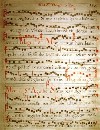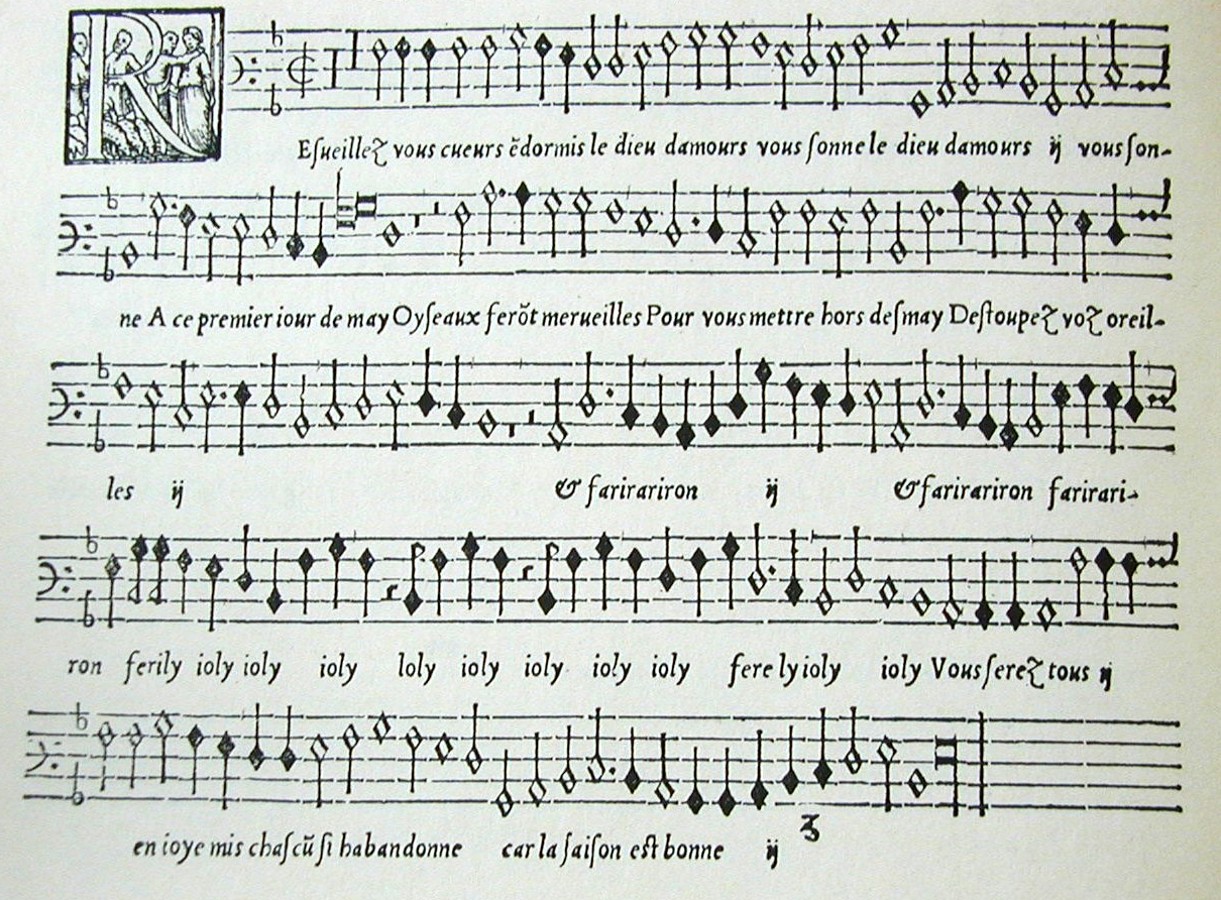
|
PDR EditionsAbout the Editions |
Renaissance music was typically written in mensural notation, without bar lines and often with note values twice, or even four times, as long as those of modern notation.

|
A page from Nicolas Gombert's
Le Chant des Oyseaux - 1545
In PDR Edition transcriptions, the note values used are selected to reflect the notation that modern readers are accustomed to seeing. Many of these editions are available with the music in both modern notation and with a close facsimile of the original notation. The latter section is divided by voice part, as it would have been originally.
While a fine performance of a piece can be achieved by using only the modern notation, the advanced choir will find that even better results may be obtained by using the modern notation for the first several rehearsals only. Once familiarity with the music is obtained, the singers should switch to the part book notation. The absence of bar lines will give the flow to the music that the composer intended. The strong beat one that bar lines incite will then be eliminated, bringing out the natural accent of the words and the overall flow of the phrases and the music itself. To learn the fundamentals of reading mensural notation, see
The individual parts include references to measure numbers and page numbers in the full score. When refering to these measure numbers while singing from the part books, the director should specify the starting point by the number of beats (semi breves or minims) before or after the measure number. This is necessary since all the parts seldom begin a phrase on the same tactus, nor do all the parts have identical measure number references. One wonders how 16th century directors specified starting points.
The editor hopes that these editions, encompassing both old and new notation, will enable choirs and choruses to perform Renaissance music as it was originally intended, as well as educating and challenging singers in an overlooked aspect of musicology.

|
Any musica ficta accidentals that appear above the staff are suggestions of the editor and do not appear in the original score. The discretion of the director will dictate their use and, perhaps, where others are also appropriate.